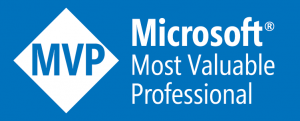Uncovering the ROI of SharePoint
Maybe it’s me and the circles I run in, but I’m just not hearing the question "What is the return on investment of SharePoint?" from customers any more. It’s not that people have a perfect understanding of how to use the platform to get business value — but I do believe we’ve crossed a threshold where our collective understanding of the value of collaboration has matured.
The problem of finding ROI is more fundamental than just SharePoint — it is a recognized deficiency in many IT projects: projects often move forward without a clear understanding of what is to be delivered, without a clear picture of that "end state" of the project. Many organizations see the inherent value, but have trouble articulating this value to management and executive sponsors, which is a serious problem — and this can impact the long-term success of a project.
I had a great conversation with my good friend and HUGE advocate of understanding your business goals before attempting to build or buy, Paul Culmsee (@paulculmsee) from Seven Sigma in Perth, Australia, and one of the founders of the Glyma.co tool and website (which I’ll talk about more in the coming weeks). He probably doesn’t even remember this conversation, which took place about a year ago, and was hidden away in my OneNote archives. But here was his take on finding ROI:
It is common to hear consultants wax lyrical about how we have to align SharePoint to "business goals". While this and other popular clichés like "obtain executive support" or "obtain user buy-in" are easy to say, in practice they are much harder to do. After all, if this was not the case, then business goal alignment would not be near the top of the list for SharePoint challenges.
Deploying Microsoft SharePoint is about alignment, adaption and adoption (all that “people stuff” that geeks suck at). Current SharePoint governance documentation abounds in service delivery, but just because your system is rock solid, stable, well documented and processes defined, there is absolutely no guarantee of success. In fact, the secret sauce to a successful SharePoint project is an area that governance documentation barely touches.
Rather than just sit and talk about what is wrong with the world, companies often need practical guidance, tools and methods on how to tame this complex problem to ensure that all aspects of SharePoint delivery clearly align to organizational aspirations, ensure all stakeholder needs are considered and at the same time, and create the understanding and commitment via an inclusive, collaborative approach.
One of my favorite slides from my keynote at the European SharePoint Conference in Barcelona earlier this year was the one that talked about the three aspects of any business strategy: people, process, and technology (the image above). Your priorities should always be in that order — people first, process second, technology a distant third. And yet, many organizations often flip them, putting technology ahead of people and process….and this is where problems occur and business alignment fails. Part of the problem is that we are much more comfortable and confident is talking about technology. It works, or it doesn’t. There tends to be a list of features, with a reserve of examples and case history. Process is harder, but again, it’s something we can define and document. People issues, on the other hand, are difficult.
One of the changes in the SharePoint space is partly because of the maturity of the space, but I do believe that the increasing focus on the cloud also has something to do with it. As we spend less and less time thinking about the traditional infrastructure and management problems or managing SharePoint on premises, and turn more of our collective attention toward a service model like Office 365, we are spending less time talking about the technology, and more time focusing on the business and end user needs.
Btw, if you’re not following Paul’s blog at www.cleverworkarounds.com, you should be.





